Resources
Glossary
Keps Lock Nut
Keps Lock Nuts feature a free-spinning nut and an integrated external tooth washer designed to prevent loosening caused by vibration. When tightened onto a bolt, screw, or stud, the teeth of the free-spinning washer will grip the installation surface, creating resistance against rotation. The added friction helps maintain a secure bond, making this fastener suitable for applications where vibration and movement are concerns, such as in light-duty automotive and machinery assemblies.
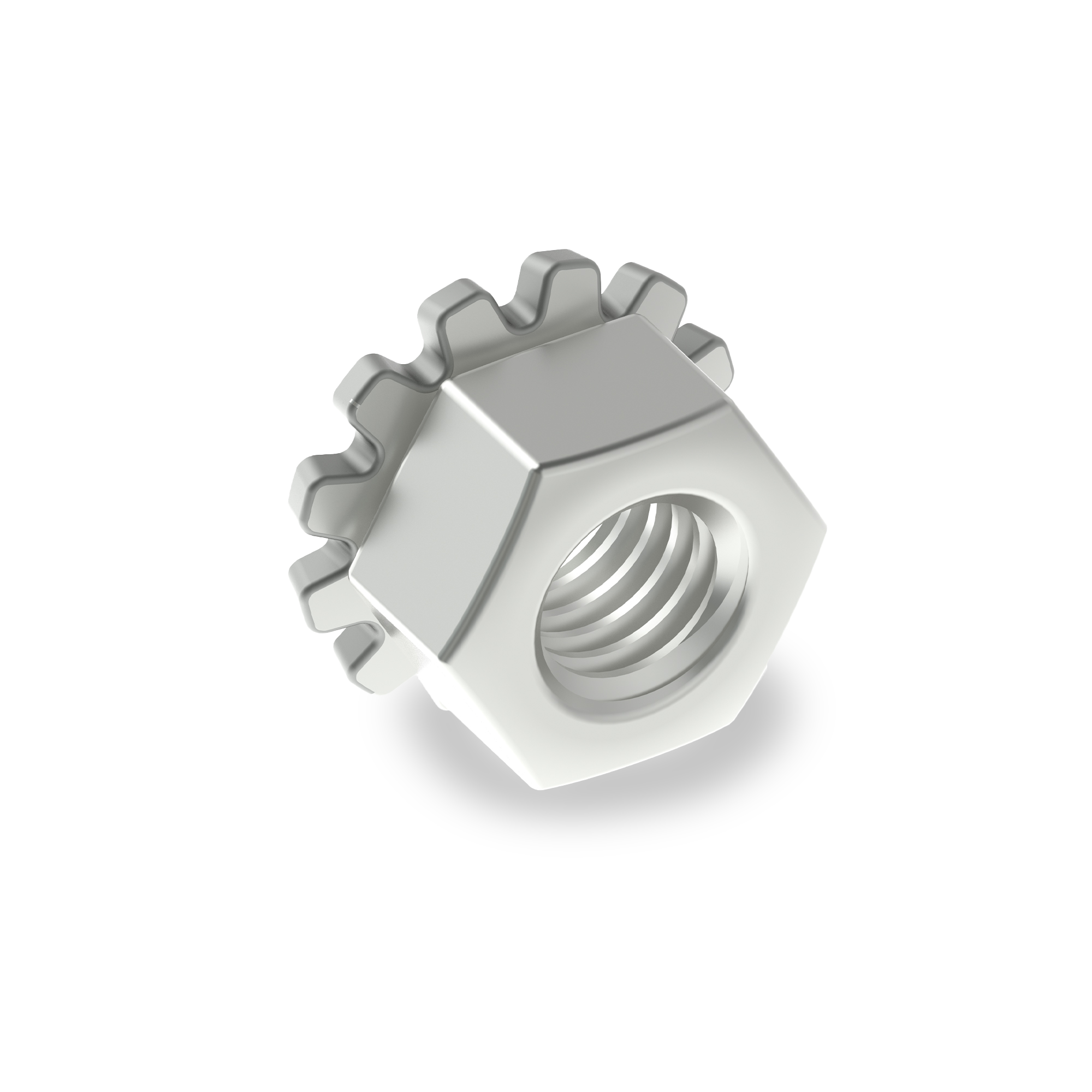
Kevlar
Kevlar is a high-strength synthetic fiber known for its exceptional toughness, heat resistance, and lightweight properties. It’s part of the aramid (aromatic polyamide) family of polymers and was developed by DuPont in 1965. Chemically, Kevlar is composed of long chains of para-aramid molecules that align parallel to one another and are held together by strong hydrogen bonds, giving the fiber remarkable tensile strength relative to its weight.
Kevlar is most famous for its use in bulletproof vests and body armor, but it’s also widely used in industrial and engineering applications, including fasteners, cables, hoses, belts, composite reinforcements, and FRP (fiber-reinforced plastic) materials. In fastener and structural applications, Kevlar fibers are sometimes woven into Kevlar-reinforced polymers, where they increase impact resistance and durability without adding significant weight.
Physically, Kevlar is five times stronger than steel by weight, yet it’s light and flexible. It also has excellent thermal stability—it doesn’t melt and can withstand temperatures up to about 450°C (850°F) before decomposing. Additionally, it’s resistant to abrasion, fatigue, and many chemicals, though it can degrade under prolonged UV exposure.
There are several types of Kevlar, including Kevlar 29 (used in ballistic and industrial applications) and Kevlar 49 (used in composites for aerospace and automotive structures).
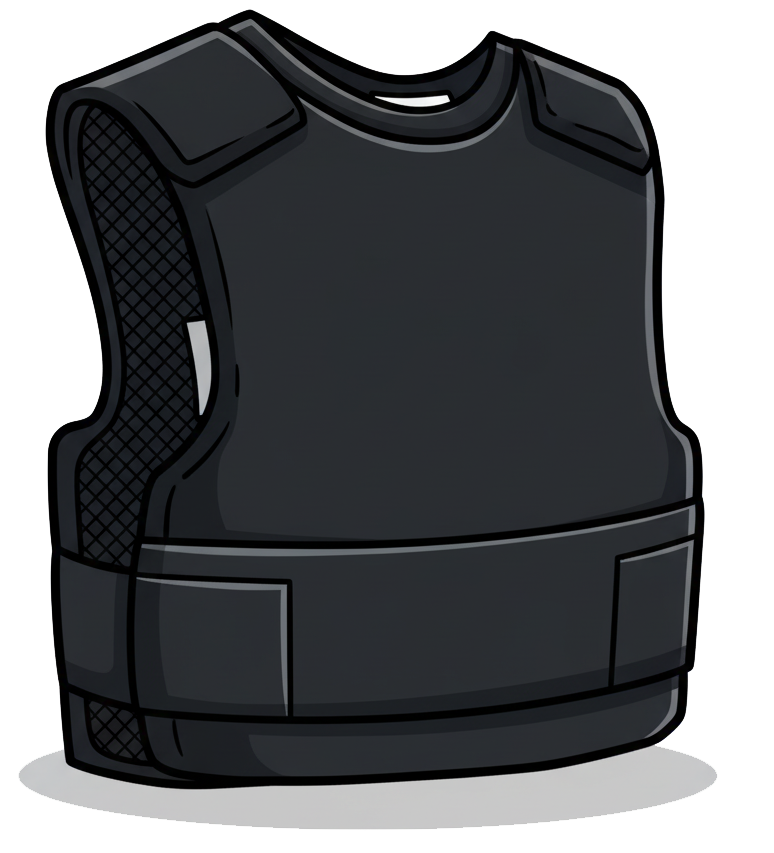
Key Locking Insert
A Key Locking Insert (often called a Keensert®) is a solid, threaded bushing used to create strong, wear-resistant internal threads in a parent material or to repair damaged threads. Unlike wire inserts, it has one-piece steel walls and mechanical locking keys that are driven into the parent material to prevent the insert from turning or pulling out under load and vibration.
How it works: the hole is drilled (or cleaned up) and tapped to the insert’s external thread size per the insert specification. The insert is screwed in until seated, then the pre-assembled keys are driven through notches at the top so they bite into the parent material, positively locking the insert. The result is a permanent internal thread—usually standard UNC/UNF or metric—ready for the service bolt or stud.
Where it’s used: high-vibration environments (aerospace, defense, heavy equipment); soft or thin materials such as aluminum, magnesium, and some castings that need stronger threads; and field repairs of stripped or oversized holes.
Types & options: available in free-running (standard internal thread) or self-locking (prevailing-torque) versions; in miniature/thin-wall and heavy-duty styles to suit space and load needs; and typically made of stainless or alloy steel with finishes/coatings for corrosion or galling control.
Advantages vs. wire inserts: higher pull-out and torque resistance, excellent anti-rotation thanks to the keys, and robust one-piece walls. Trade-offs: they require a larger tapped hole and add some weight and cost.
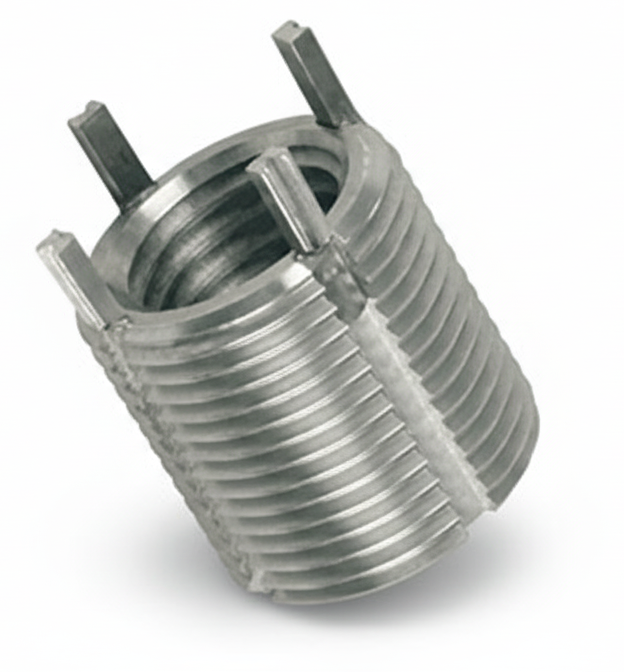
Keyway
A keyway is the machined slot used with a key to lock a hub (gear, pulley, coupling) to a shaft so they rotate together and transmit torque. In strict terms, the slot in the shaft is the keyseat and the slot in the hub is the keyway, but in industry “keyway” is often used for either. A rectangular or half-moon key fits between the two slots; torque is carried by the side faces of the key.
Good practice is to have a small top clearance between the key and the top of at least one slot so load stays on the sides, plus a little end clearance so thermal growth doesn’t jam the key. Because a slot cuts into the shaft, keyways reduce shaft strength locally; placing them away from the plane of maximum bending and using generous end radii (or Woodruff keys) helps curb stress concentrations and fretting.

Common styles include parallel (square/rectangular) keys for fixed hubs, Woodruff (half-moon) keys that self-align and are gentle on the shaft fillet, taper/gib-head keys that wedge the hub tight, and feather keys that allow axial sliding while still transmitting torque. For higher torque or frequent assembly, designers often move to splines, which act like multiple keys and keep shaft strength higher.
Keyways are made by milling the shaft seat and broaching, slotting, or wire-EDM the hub slot. Sizes, tolerances, and fits are standardized (e.g., ASME B17.1 / ISO equivalents), so most designs pick the key size from the shaft diameter table and then set length to meet torque and bearing-pressure limits. Typical failures are shear of the key, crushing of key or hub walls, and fretting/rocking from too much clearance—each avoided by using the proper standard size, correct fits, and adequate hub length.
Killed Steel
Killed steel is a type of fully deoxidized steel in which oxygen is almost completely removed from the molten metal before it solidifies. This process prevents gas evolution during solidification, ensuring a uniform composition and eliminating gas porosity or blowholes in the finished product. The term “killed” comes from the idea that the steel has been “quieted” — it doesn’t bubble or effervesce while cooling in the mold, unlike rimmed or semi-killed steels.

The deoxidation process is typically achieved by adding strong deoxidizing agents such as aluminum, silicon, or manganese to the molten steel. These elements combine with dissolved oxygen to form stable oxides, which float to the top and are removed as slag. As a result, the molten steel solidifies quietly and uniformly throughout the ingot or casting.
Killed steels are characterized by their high uniformity, consistent composition, and dense structure. They are particularly suited for applications that require deep drawing, heat treatment, or high structural integrity, since the absence of gas pockets improves machinability, weldability, and toughness.
Common uses include pressure vessels, structural shapes, plates, and alloy steels for tools and automotive components. Most alloy steels and high-quality carbon steels are killed steels because their performance depends on precise control of chemical composition and microstructure.
AKA: Deoxidized Steel
KMC Clamp
A KMC clamp is a high-quality industrial fastening device produced by KMC, a company known for its durable clamps and clips since 1908. Their COV Series clamps are medium-duty, vinyl-coated clamps designed for securing wires and tubes at temperatures up to 300°F. KMC manufactures all standard parts in the USA, ensuring compliance with RoHS and REACH standards for industrial reliability.
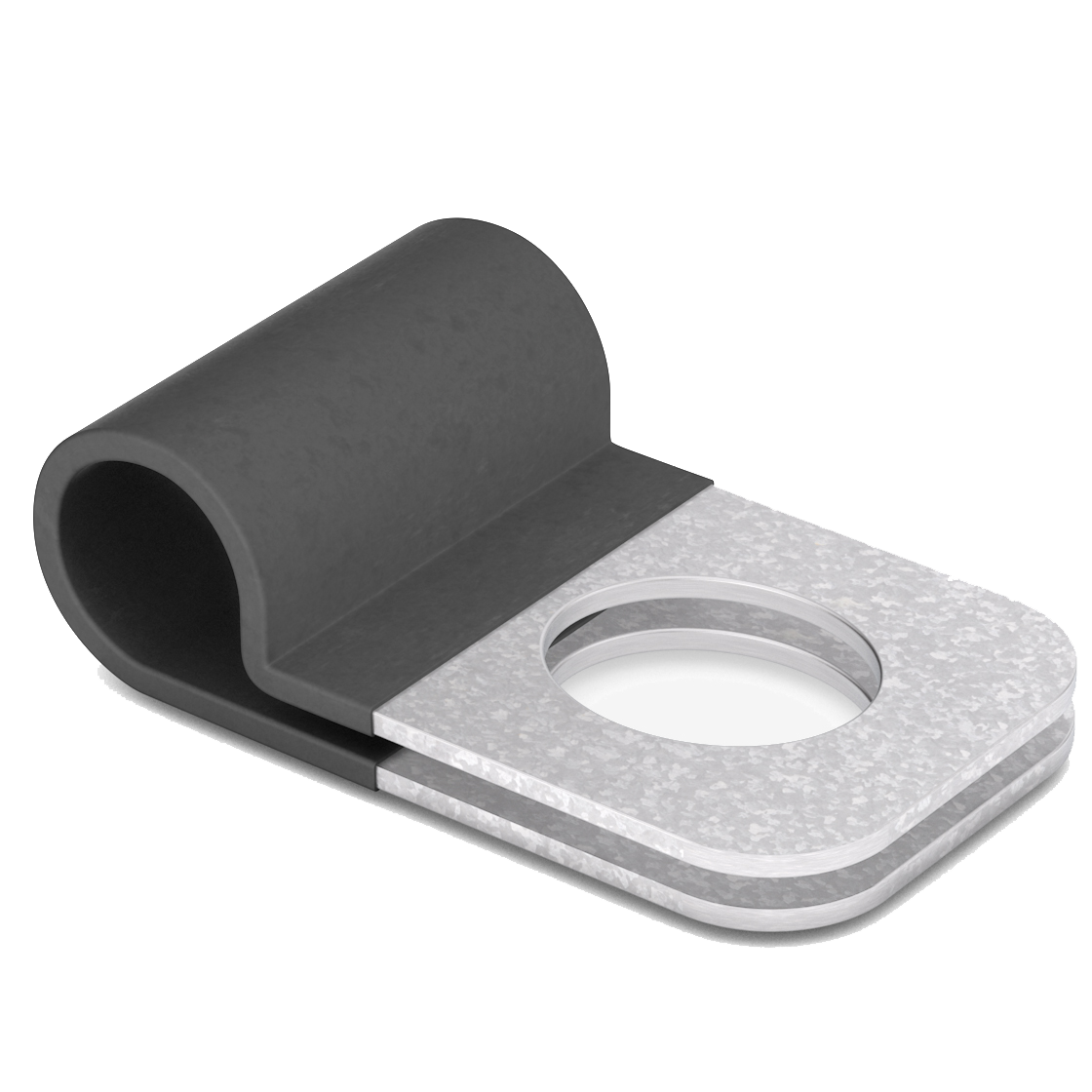
KMC Clip
A KMC clip is a fastening device produced by KMC, the Original Clip and Clamp Company established in 1908. These clips are designed to securely hold wires, cables, tubes, and pipes in various industrial applications. KMC offers a wide range of standard clips, such as the CJV Series, which are vinyl-cushioned tube and wiring clips available in various sizes to accommodate different clamping diameters. All standard catalog parts are made in the USA and comply with RoHS and REACH standards, ensuring high quality and reliability.
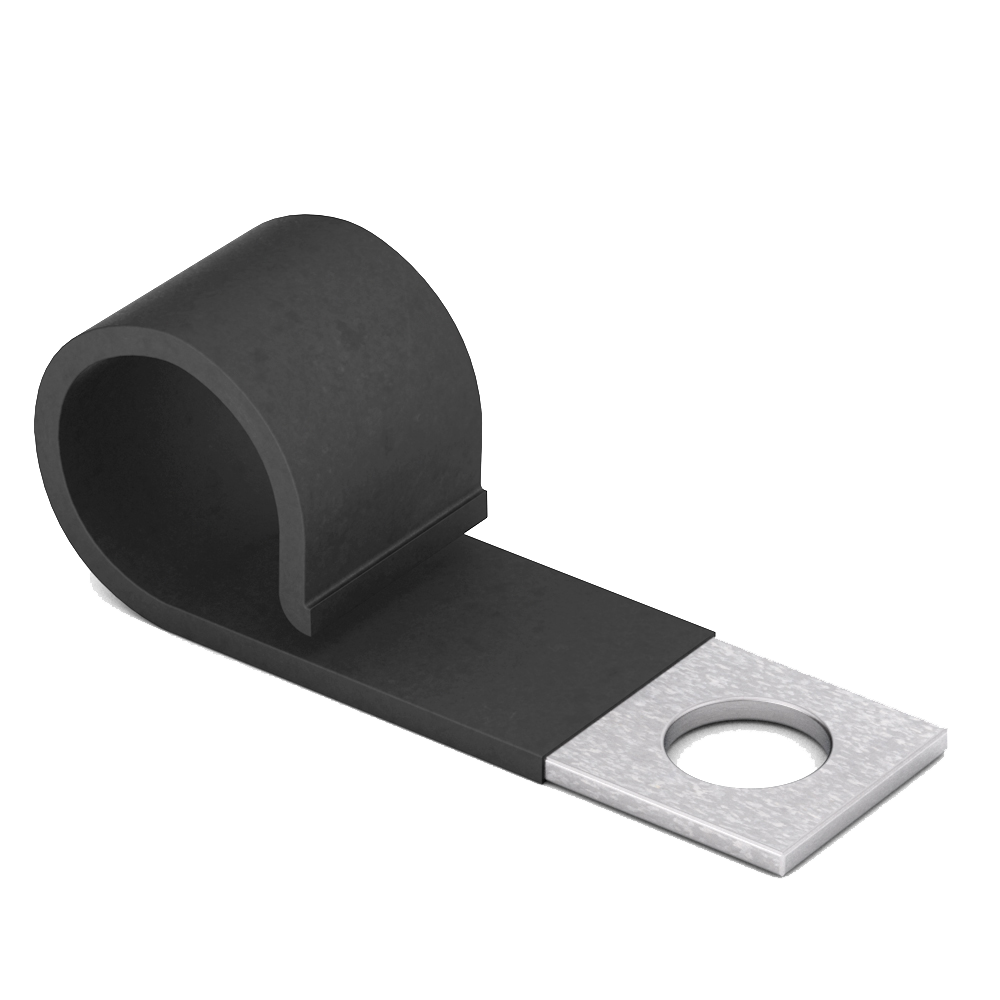
KMC Expansion Plug
An industrial expansion plug is a mechanical device used to seal, block, or test openings in pipes, tubes, or bores by expanding to create a tight and secure fit. These plugs are widely used in plumbing, automotive, aerospace, and industrial applications to prevent fluid or gas leakage, maintain pressure, or temporarily seal off sections for maintenance.
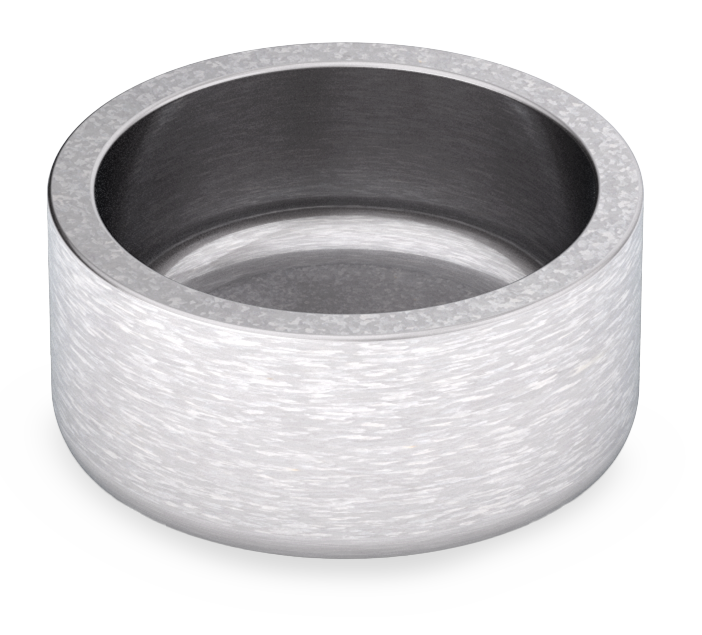
Knoop Hardness Test
The Knoop hardness test is a microhardness testing method used to measure the hardness of very small, thin, or delicate materials—such as metal coatings, thin films, ceramics, and microstructures—where traditional hardness tests (like Rockwell or Brinell) would be too aggressive or imprecise. It was developed by Frederick Knoop and his colleagues at the National Bureau of Standards in 1939.
Unlike macroscopic hardness tests that use larger loads and indenters, the Knoop test uses a very light load (typically between 10 and 1000 grams-force) and an elongated diamond-shaped indenter. The indenter is rhombohedral, with one diagonal much longer than the other (about a 7:1 ratio). This unique shape allows for shallow indentations, making it ideal for testing thin coatings or brittle materials without causing cracking or substrate influence.
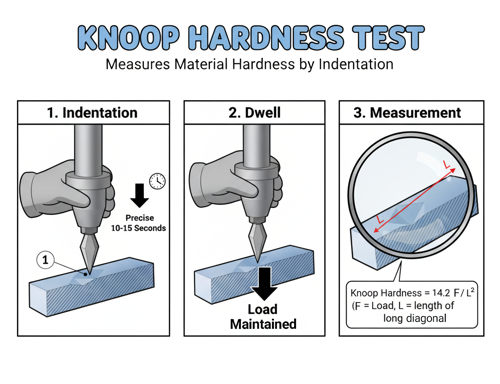
Here’s how the test works:
A highly polished sample surface is prepared, and the diamond indenter is pressed into it under a precise load for a set time (often around 10–15 seconds). After the load is removed, the length of the long diagonal (L) of the indentation is measured under a microscope. Because the indentation is so shallow, the area of contact can be accurately calculated using that diagonal measurement.
The Knoop hardness number (HK) is then determined by the formula:
HK = 14.229 × (F / L²)
where:
- HK = Knoop hardness number
- F = applied load (in kilograms-force)
- L = length of the long diagonal (in millimeters)
The constant 14.229 is derived from the geometry of the indenter.
The resulting value is expressed in kgf/mm² and gives a precise indication of the material’s resistance to localized deformation.
Because the Knoop test causes minimal surface damage and offers extremely fine resolution, it’s commonly used in metallurgy, thin-film coatings, microelectronics, ceramics, and glass. It’s particularly useful for measuring hardness gradients in surface treatments, case-hardened steels, and individual microstructures or phases within a metal or alloy.
Knurl
A knurl on a fastener is a patterned ridge texture—usually straight, diamond (cross-hatched), or helical—formed by rolling or cutting the metal. It’s added to the shank, head, or flange to create friction or an interference fit so the part won’t rotate or pull out. You’ll see knurls on press-fit pins, self-clinching/press-in nuts and inserts (especially for plastics and soft metals), rivet nuts with anti-rotation bands, and on thumb screws/knobs where the pattern also improves finger grip.
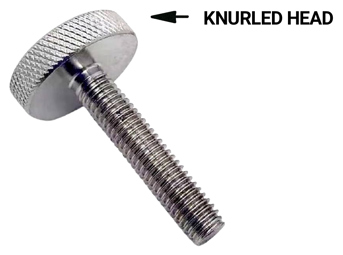
Compared with under-head serrations (which lock under a bolt head), knurls are raised ridges that bite into a mating material along the surface they contact. The result is higher torque-to-turn resistance, better anti-rotation in plastics and aluminum, and more reliable retention without adhesives.
Knurled Nut
A knurled nut is a specialized fastener with a ridged or textured exterior surface—called knurling—that enhances grip for hand tightening and loosening without tools. Unlike conventional nuts that depend on wrenches or sockets, knurled nuts are designed for applications where quick adjustments, easy assembly, or frequent removal are needed. This makes them especially useful in settings where convenience and accessibility are prioritized over high clamping force.
In terms of design, knurled nuts are often cylindrical, but they can also take flanged or domed forms. The knurling pattern, which may be straight, cross-hatched, or diamond-shaped, is either machined or rolled into the nut’s surface to create a roughened grip. These nuts are produced in various materials—such as brass for conductivity, stainless steel for corrosion resistance, aluminum for lightweight strength, and plastic for cost efficiency or non-conductive applications—depending on the performance requirements of the assembly.
The purpose of a knurled nut is to enable secure fastening while still allowing tool-free operation. They are intended for low-torque applications where a firm hand grip is sufficient, making them ideal for adjustments, fine positioning, or parts that require frequent disassembly. Their hand-friendly design ensures users can easily operate them even in tight or delicate setups, where over-tightening with tools could cause damage.
Common applications include electronics, instrumentation, and machinery, where they secure panels, covers, or knobs. They are also prevalent in camera and lighting equipment, which often demand rapid hand adjustments, as well as in furniture assembly, consumer appliances, and clamping systems where tool-free operation is a key advantage.
Knurled nuts offer several benefits: they are simple to install and remove, provide excellent grip even with oily or wet hands, are available in multiple materials and finishes to suit specific uses, and eliminate the need for tools in many low-torque assemblies. However, they do have limitations. They are unsuitable for high-load or high-vibration environments, where the absence of strong clamping force can cause loosening. Over time, the textured edges can wear down, especially with frequent adjustments, and some designs are bulkier compared to standard nuts, making them less space-efficient.
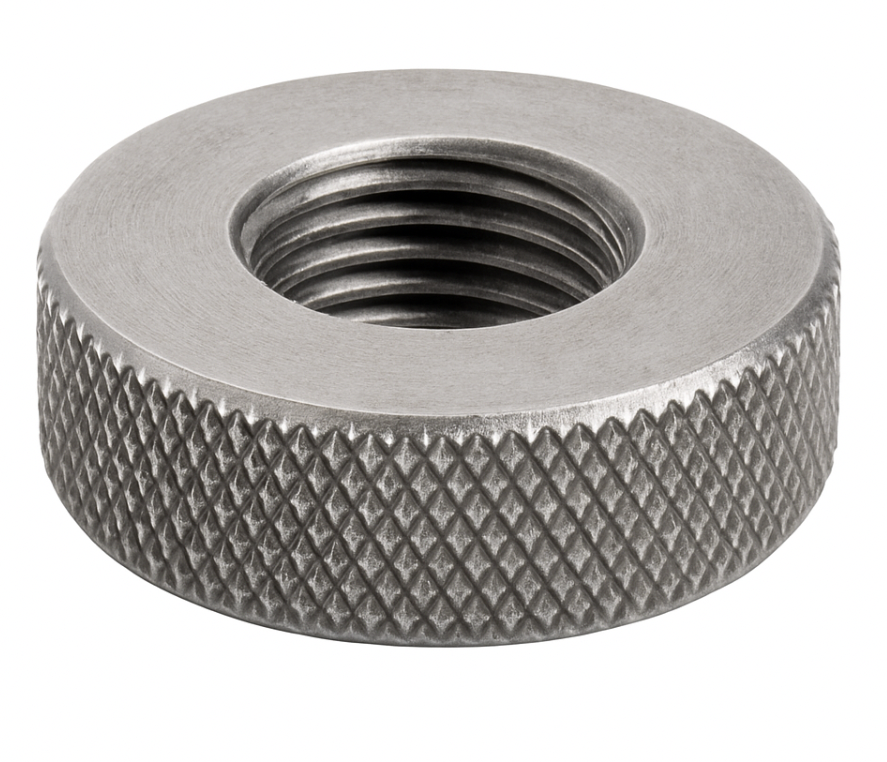
Kroll Process
The Kroll process is the primary industrial method for producing titanium metal from its ore. It is a multi-step chemical reduction process that converts titanium dioxide (TiO₂) into pure metallic titanium (Ti) using magnesium (Mg) as a reducing agent. Developed by Dr. William J. Kroll in the 1940s, this process remains the dominant technique for titanium production worldwide due to its reliability and ability to produce high-purity metal.
The process begins with titanium dioxide (TiO₂)—extracted from ores such as ilmenite (FeTiO₃) or rutile (TiO₂)—which is first converted into titanium tetrachloride (TiCl₄), also known as “tickle”, through chlorination. In this step, TiO₂ reacts with chlorine gas and a carbon source (often coke) at high temperatures (around 900°C):
TiO₂ + 2Cl₂ + C → TiCl₄ + CO₂
The titanium tetrachloride, a volatile liquid, is then purified by distillation to remove impurities like iron, vanadium, and silicon. This purified TiCl₄ is then fed into a reduction reactor, typically made of steel, where it reacts with molten magnesium at around 800–900°C in an inert argon atmosphere. The reaction converts the titanium chloride into metallic titanium and magnesium chloride:
TiCl₄ + 2Mg → Ti + 2MgCl₂
The titanium produced in this step is not molten but forms as a spongy, porous mass known as titanium sponge. After cooling, the solidified mixture of titanium and magnesium chloride is crushed and leached or vacuum-distilled to remove residual magnesium and MgCl₂, leaving behind nearly pure titanium metal. The resulting sponge can then be melted, alloyed, or forged into bars, sheets, or billets for aerospace, chemical, and industrial applications.
Despite being energy-intensive and relatively slow, the Kroll process produces high-quality titanium suitable for critical uses such as aerospace components, medical implants, and corrosion-resistant equipment. It has largely replaced the older Hunter process, which used sodium as a reducing agent.
